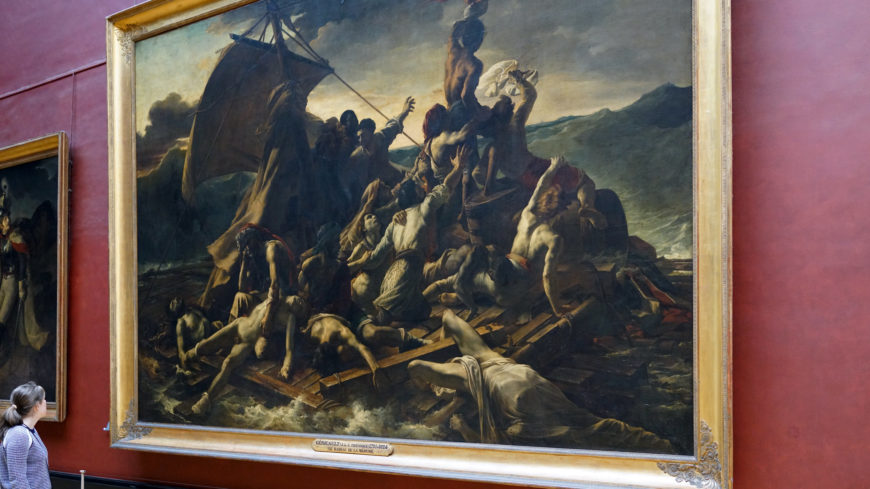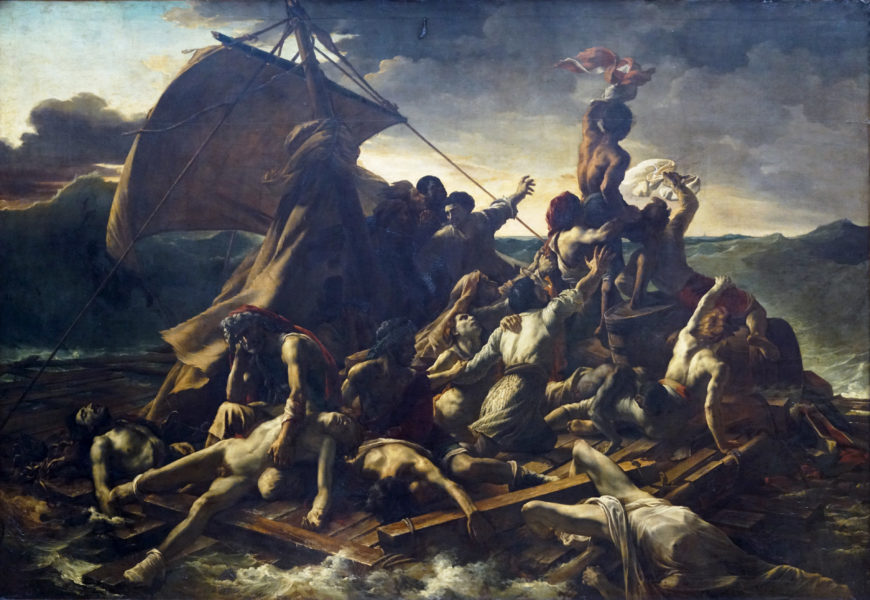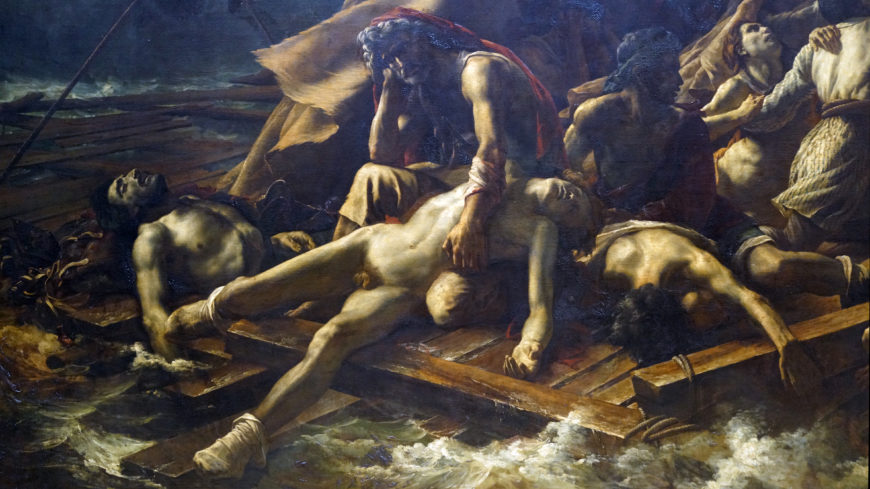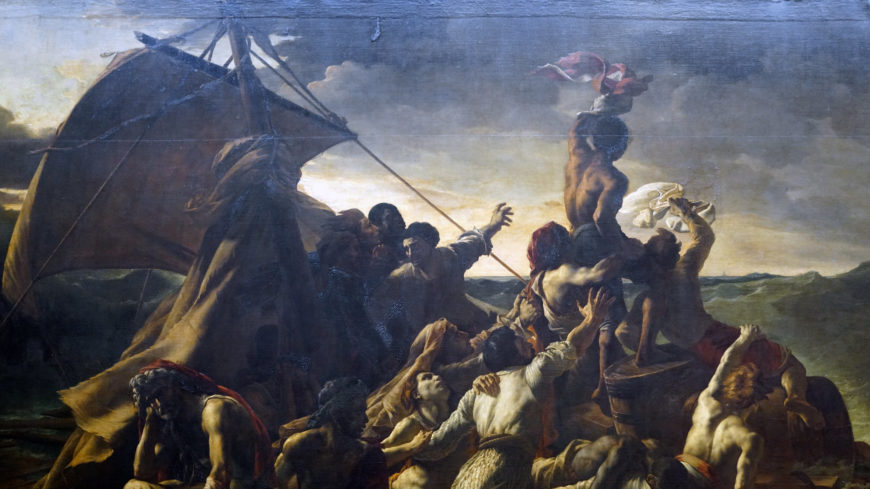Théodore Géricault, Raft of the Medusa

A radical work of art
In 1819, a young man bolted through the streets of Paris. Years later, he said he must have looked crazy as he ran all the way home. He was the painter, Eugène Delacroix, and he had just seen Théodore Géricault’s astonishing painting, Raft of the Medusa, in the painter’s studio. Today, visitors to the Louvre museum stop in front of the painting as they make their way through the galleries, but in 1819 it was a truly radical work of art that astonished everyone.

A scene of desperation
The canvas is massive, measuring just over sixteen by twenty-three feet, so large that Géricault had to rent a studio big enough to house it as he worked. Standing in front of the painting, we see a raft, built of scrap lumber, rocking on the ocean waves. The eye is first drawn to the intertwined figures moving up the canvas to the right, bodies extended together as their arms gesture upward in a strong diagonal. At the top of the group, a Black man waves a piece of red and white fabric, signaling to a tiny ship deep in the background, as does a lighter skinned figure below him. All of the living people depicted in this striking pyramidal composition eagerly seek rescue, but among them are the dead and dying.

At the bottom left are those who have lost hope and the already dead. A grey-haired, bearded man, clad in a red head-covering, sits on the raft with his head resting on his right hand. His left hand grasps the torso of a pale young man, presumably his dead son, whose limp, alabaster body remains precariously extended on the edge of the raft. Bodies on the verge of slipping beneath the water populate the lower portion of the painting. The murky amber and green tone of the painting with strong contrasts of light and dark remind us that this is ultimately a scene of death.
Ripped from the headlines
When the work was exhibited in the Paris Salon of 1819, the public would have recognized the subject. It had been in the news just a few years before and quickly grew into a political scandal. In July 1816, a French naval ship, Medusa, was its way to Senegal carrying the new governor of the colony, his family, and some other government officials and others. The government officials came to secure French possession of the colony and to assure the continuation of the covert slave trade, even though France had officially abolished the practice. Another group aboard the Medusa was composed of reformers and abolitionists who hoped to eliminate the practice of slavery in Senegal by engaging the local Senegalese and the French colonists in the development of an agricultural cooperative that would make the colony self-sustaining.
The captain of the Medusa, who had received command of the ship through royal patronage, accidentally ran the ship aground on a sandbar off the coast of West Africa. The ship’s carpenter could not repair the Medusa and the decision was made to put the governor, his family and other high-ranking passengers into the six lifeboats. The remaining 150 passengers found themselves packed onto a raft made by the carpenter from the masts of the Medusa.
The group on the raft included lower-ranking military men, colonists, and sailors of European and African descent. The overcrowded makeshift raft, just 65 x 23 feet, was lashed to the lifeboats, but it impeded their progress so the more elite passengers in the boats took axes and cut the lines to the raft, casting it adrift. Of the 150 people aboard the raft, 15 were rescued by the Argus—the ship that we can barely see at the back of the canvas—and only 10 ultimately survived to tell the tale of cannibalism, murder, and other horrors aboard the raft.

There had never been a painting like Raft of the Medusa. It was on the grand scale of French history painting but instead of ideal forms and a moralizing story from history, Géricault offered the Salon audience a thoroughly modern, Romantic depiction of death and suffering based on a contemporary event that was in the news. To create his painting, Géricault investigated everything about the story of the raft and talked with many of the survivors. He then brought all of the research together to create a radical painting that responded to the conservative tradition of history paintings.[1]
- Dr. Claire Black McCoy, "Théodore Géricault, Raft of the Medusa," in Smarthistory, May 27, 2021, https://smarthistory.org/theodore-gericault-raft-of-the-medusa/. ↵

